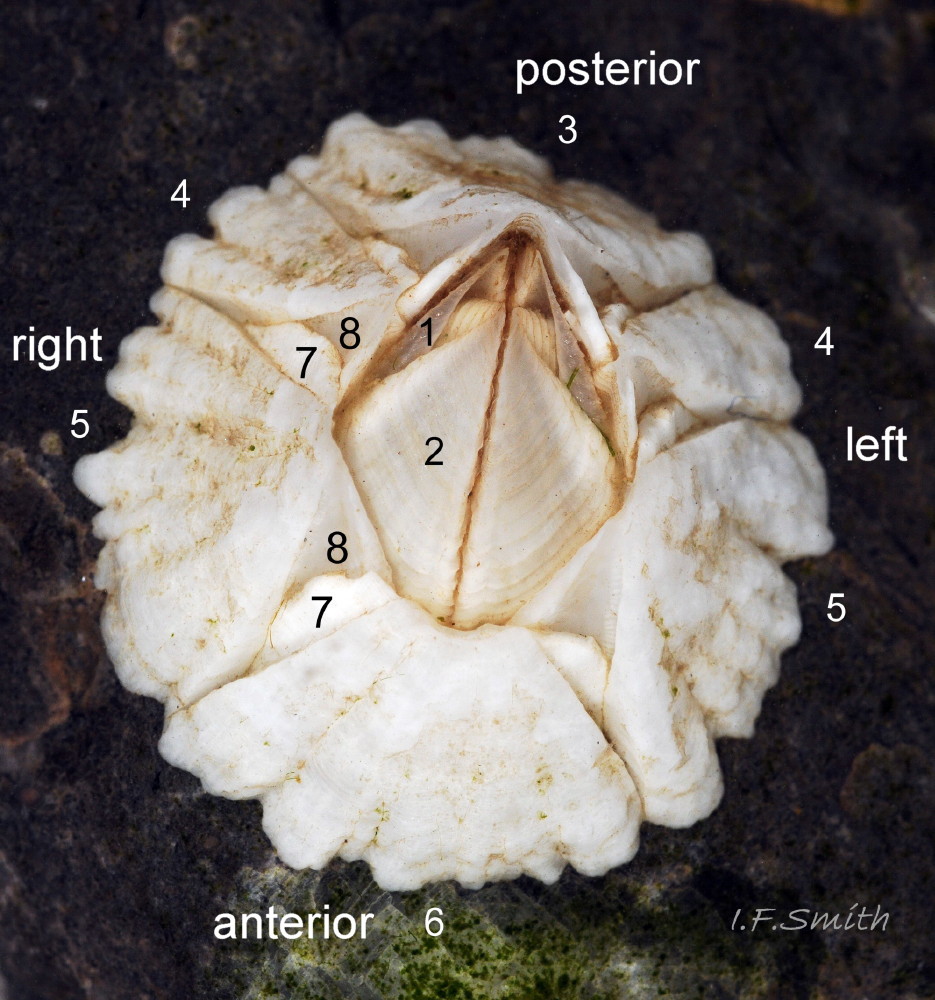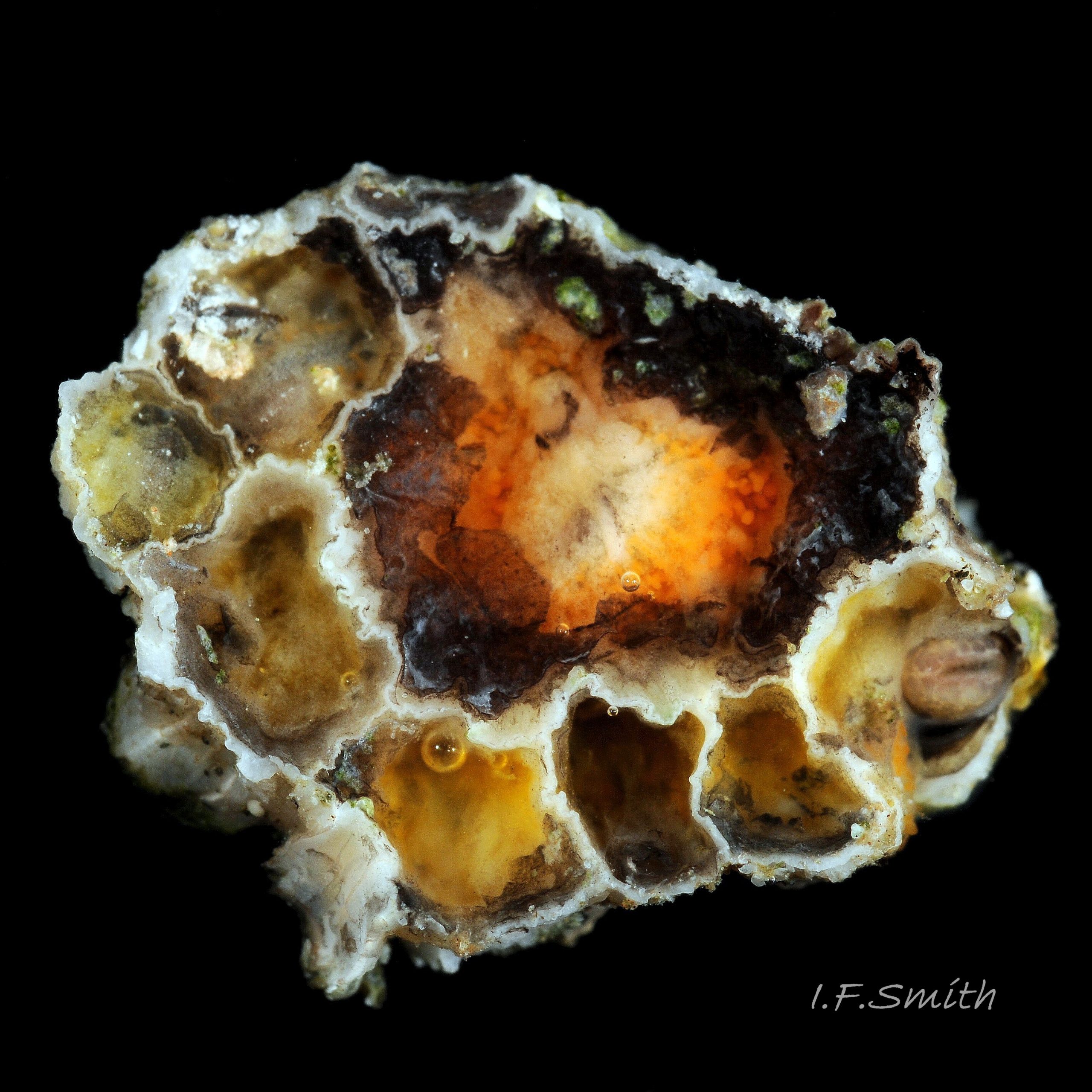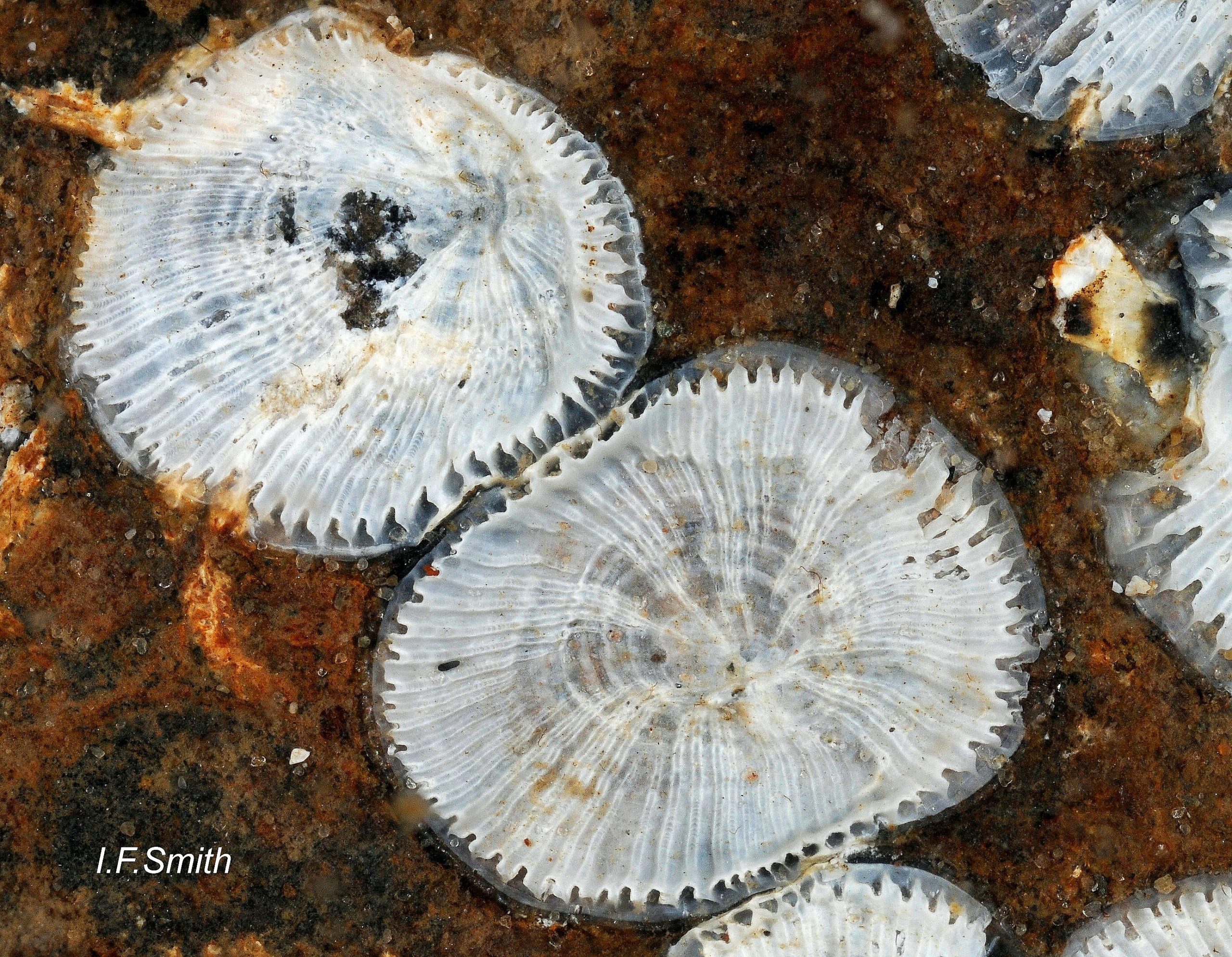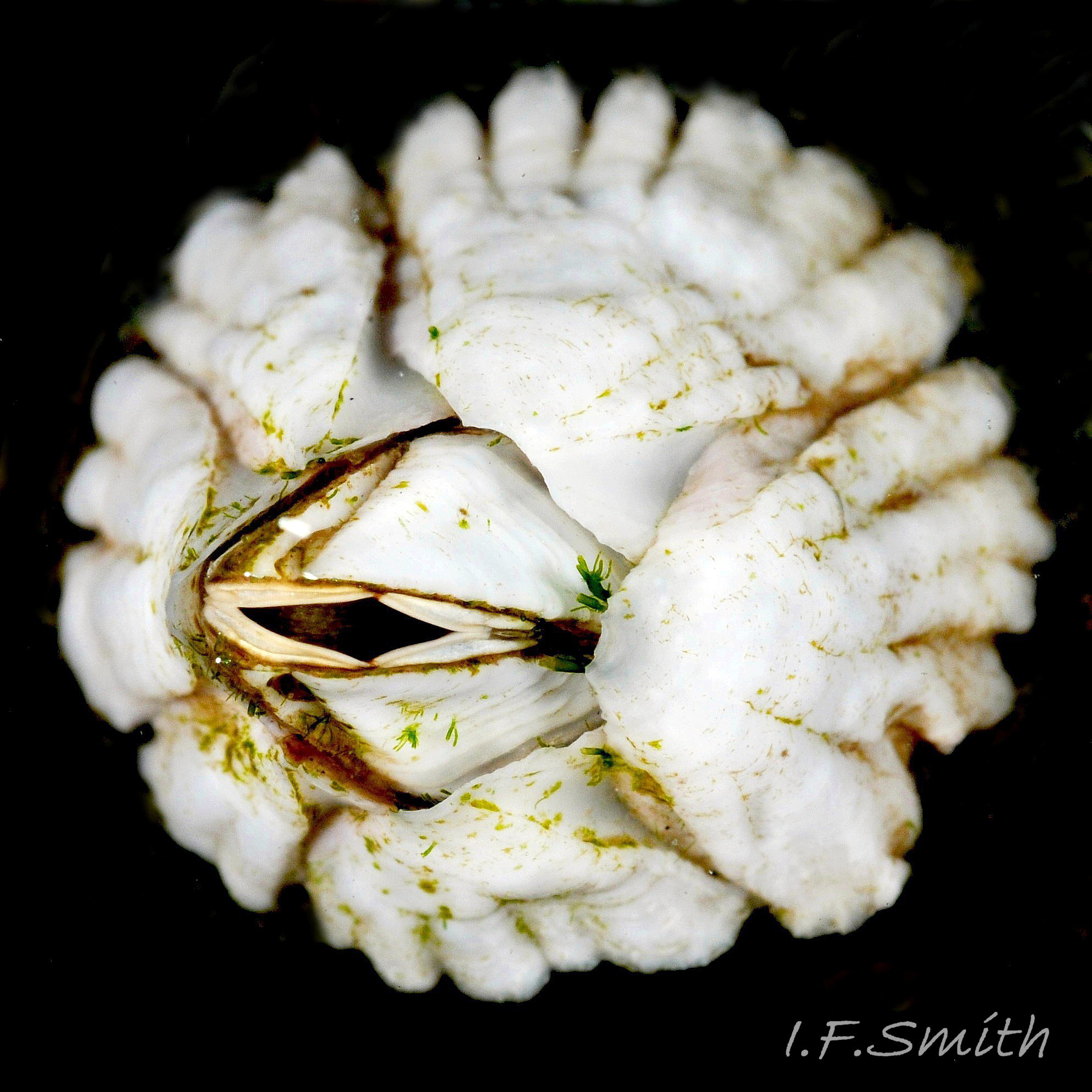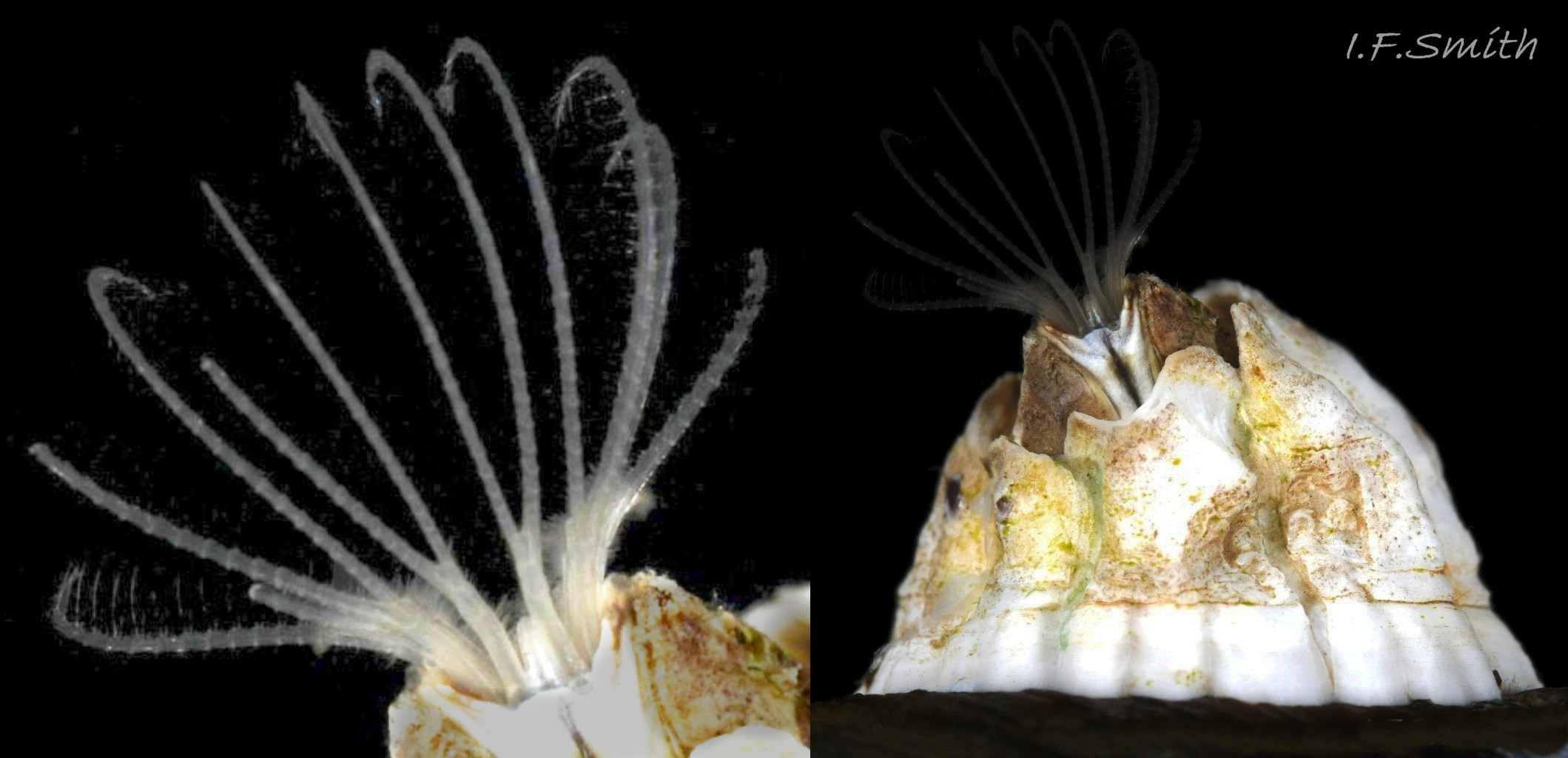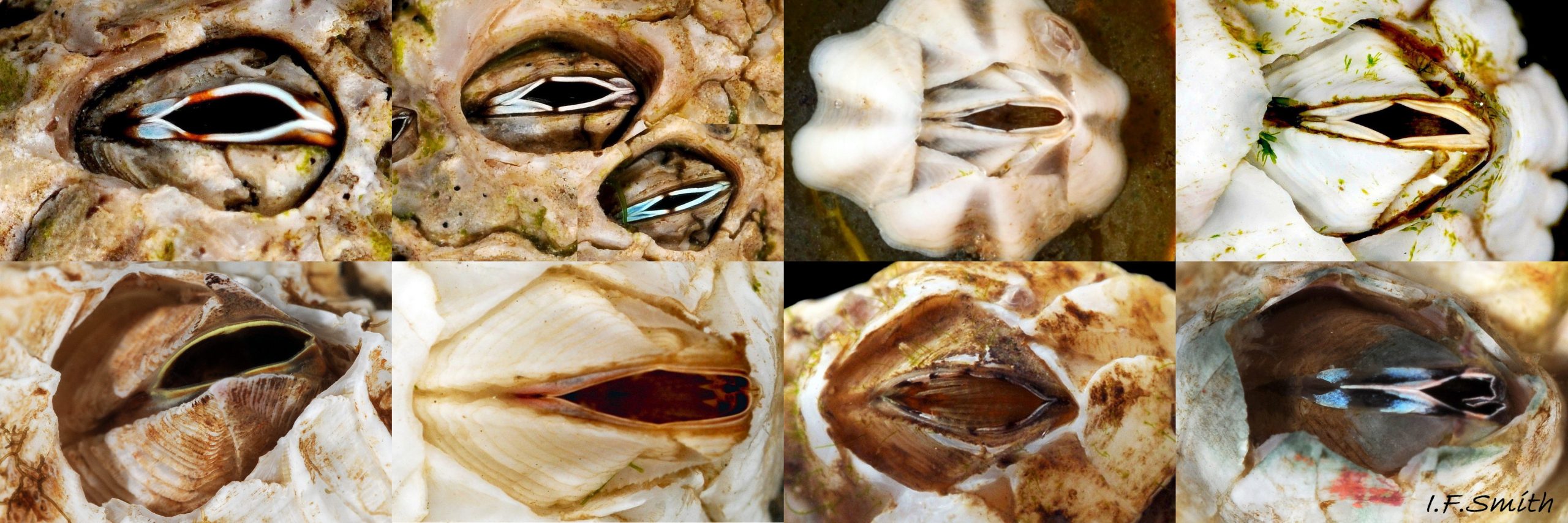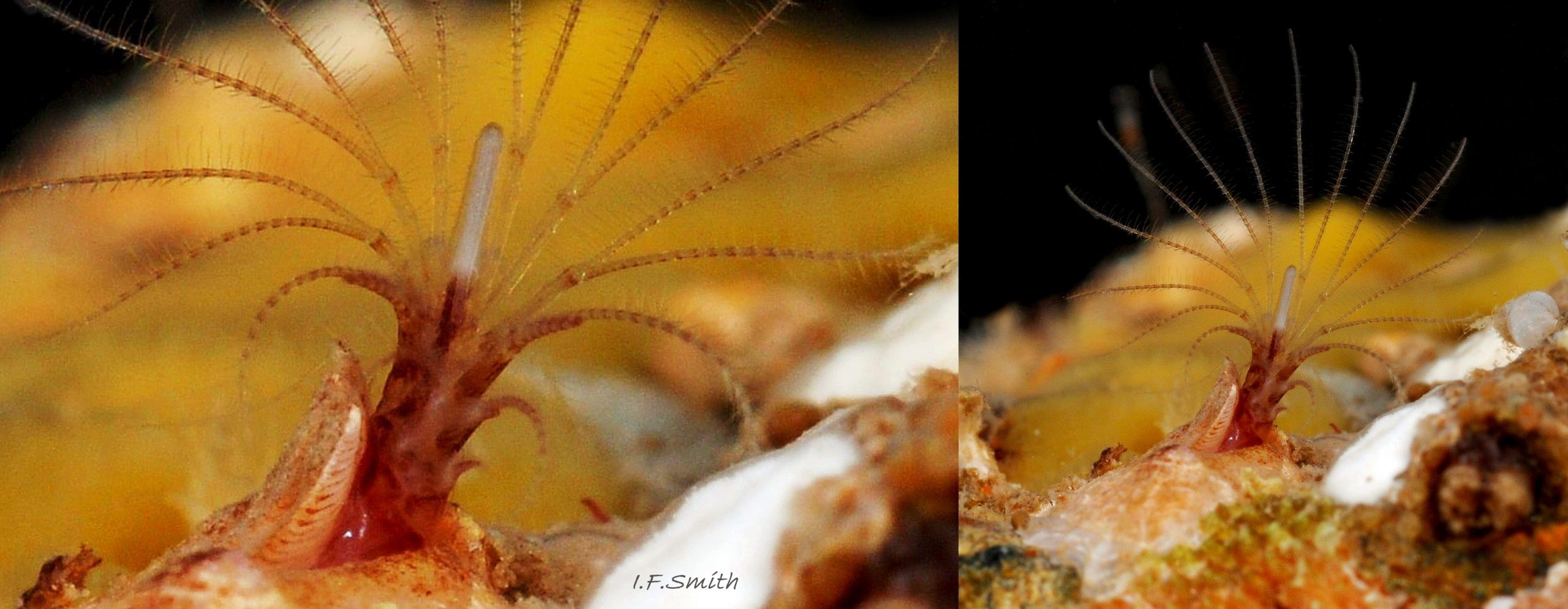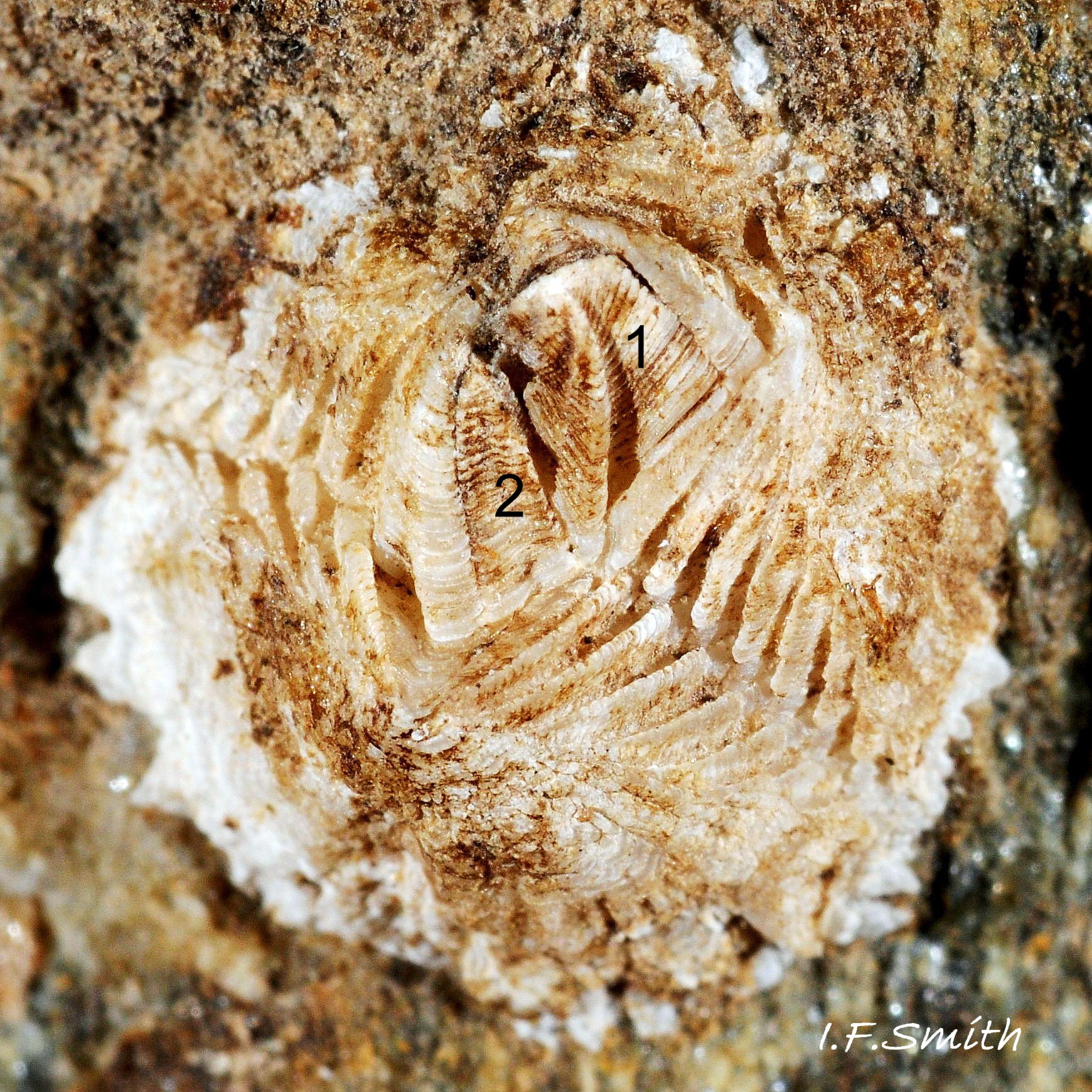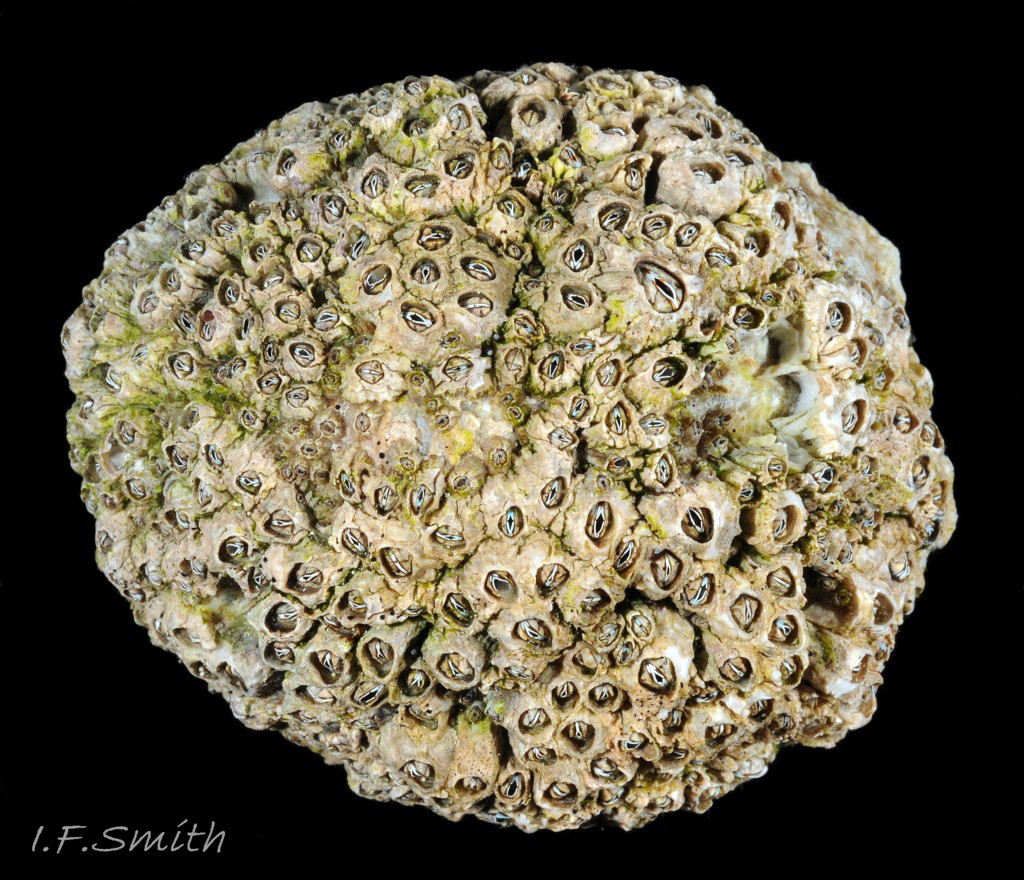Click image to enlarge with full caption. Main text below slider.
www.researchgate.net/profile/Ian_Smith19/contributions External features of acorn barnacles GLOSSARY BELOW
Apart from occasional strandings and aliens in warm water outfalls, nine species of acorn barnacle live on British shores. The following applies to all except Verruca stroemia (O.F. Müller, 1776).
The aperture can be closed by an operculum (lid) consisting of a pair of small valves, terga (1), which are often seen edge-on, and a pair of larger kite-shield shaped valves, scuta (2) 1 Int 01 Barnacle Introduction .
The walls of the shell are made of a carinal plate (3) at the tergal end, a rostral plate (6) at the scutal end, and two or four lateral plates (4&5). The plates interlock with radii (7) overlapping alae (8).
For more precise information see Rainbow (1984) and pp.12-14, PDF fsj.field-studies-council.org/media/350581/vol6.1_161.pdf .
The base of the shell attached to the substrate is membranous in some species 2Int 02 Barnacle Introduction , but others have a white calcareous disk that often remains on the substrate after the barnacle has died and been swept away 3Int 03 Barnacle Introduction . The operculum opens longitudinally with a tergum and scutum on each side 4Int 04 Barnacle Introduction . Feathery legs, cirri, extend to capture micro-organisms or detritus for food 5Int 05 Barnacle Introduction .
A fleshy flap, tergoscutal flap, runs along the free edge of the tergum and scutum on each side of the opening 6Int 06 Barnacle Introduction (Comparative images of 8 species).
Species that are exposed by tides to atmospheric air for long periods have a breathing hole, micropyle, in the closed tergoscutal flaps. If a micropyle is observed, the species is one of the following, but, if none is seen, they should not be discounted as it may be held shut: Chthamalus stellatus, Chthamalus montagui, Austrominius modestus, Semibalanus balanoides 7Int 07 Barnacle Introduction .
The ninth species, Verruca stroemia, differs in having a D-shape operculum made of a single large tergum and smaller scutum which opens along one side, and it lacks an obvious tergoscutal flap, though the reddish interior of the aperture is distinctive 8Int 08 Barnacle Introduction . The four deeply corrugated wall plates are made of a rostrum, carina and the other smaller tergum and larger scutum 9Int 09 Barnacle Introduction .
Shell
The main shell features and variations are described in each species album at marinvert.senckenberg.science/image-browse/7215763361… , but identification by shell features alone is often unreliable because very often the shells are eroded, distorted by crowding, the plates fused with age, and/or detail is obscured by growths. To find specimens resembling those on p.7 of Rainbow (link below), you may need young isolated specimens and have to remove growths with a toothbrush. Check the location of identified specimens with the distribution notes in the species accounts and at data.nbn.org.uk/ and www.gbif.org/species . Reassess the identification, or seek expert opinion, if found outside the main range. Outlying records on NBN, and NBN records at variance with the species accounts, may indicate extreme rarity or misidentification. In particular, all records of Balanus balanus on the English Channel are probably misidentifications, and pre 1976 records of Chthamalus stellatus everywhere, but especially in the North Sea, are uncertain as only then was C. montagui first segregated from it (Southward, 2008) . Tergoscutal flaps
The most reliable identification feature is the tergoscutal flaps as they do not suffer erosion or distortion. To see them requires examination of live specimens in water under magnification. Removing barnacles from rock usually kills them and damages the shell. Hammering off pieces of rock can injure them with shock waves, apart from damaging the habitat.
On sheltered shores where small stones are not rolled by the waves, look for specimens on stones small enough to fit in a container of water for examination. Some species can also be found on seaweed, wood, old shells etc. On exposed shores there will be a lack of suitable stable small stones; often the best source here is a live limpet with barnacles on it 10int 10 Barnacle introduction .
Examination of the flaps requires patience as the operculum remains shut if the barnacle is alarmed. You may need to focus your microscope or tripod-mounted camera on a specimen in water and leave it to settle down before returning quietly. The best view is often obtained for a few seconds as the opercular valves open and before the cirri extend to partially obscure the flap. The pattern of spots and lines may vary with the degree of eversion of the flap, so don’t hurry the inspection, and take several photographs if using a camera. Further reading
For more precise information see Rainbow (1984) and pp.12-14, PDF fsj.field-studies-council.org/media/350581/vol6.1_161.pdf . or index at
fsj.field-studies-council.org/browse-by-category/marine-b… (Scroll down to 1984) .
Darwin, C. 1854. A monograph on the sub-class Cirripedia. vol. 2. London, Ray Society. www.biodiversitylibrary.org/item/18394#page/18/mode/1up
Lewis, J.R., 1964. The ecology of rocky shores. London. -: Two informative chapters on barnacle ecology (not identification), but written before Chthamalus montagui distinguished from C. stellatus. About £12 secondhand.
Luther, G. 1987. Seepocken der deutschen Küstengewässer. Helgoländer Meeresunters 41: 1-43-: Identification key and thorough account of morphology and biology of German species (all occur in British waters). Tergoscutal flaps (Mantelsaum) described, but not illustrated. Chthamalus stellatus but not C. montagui, included . [Southward, 2008, disputed the only German (Helgoland) records of C. stellatus]. Free PDF at www.vliz.be/imisdocs/publications/141529.pdf
Rainbow, P.S., 1984. An introduction to the biology of British littoral barnacles. Field studies 6 -: Clearly written and illustrated. All nine littoral species described, plus an alien found in warm water outfalls. Some tergoscutal flaps described, but none illustrated. Free pdf at
fsj.field-studies-council.org/media/350581/vol6.1_161.pdf
Southward, A.J., 2008. Barnacles. The Linnean Society of London Synopses of the British Fauna, 57 -: All British littoral and sublittoral species with illustrations of tergoscutal flaps of all. About £30. Written by a foremost authority, essential for sublittoral spp. and their tergoscutal flaps, but descriptions sometimes incomplete, only some scuta and terga illustrated, flimsy cover, and caption confuses ‘tergum’ and ‘scutum’. Compare with original captions, page 3, in Darwin (1854).
GLOSSARYala – (pl. alae) side flange of wall plate, overlapped by radius of next plate.
carina – posterior wall plate adjoining the smaller pair of lid valve (terga).
carinal – (adj.) of the carina.
cirri – (sing. cirrus) feather-like thoracic limbs used in filter feeding.
cypris – (pl. cyprids) final larval bivalved stage in barnacle development.
euryhaline – tolerant of wide range of salinities.
eurythermic – tolerant of wide range of temperatures.
HW- high water level.
HWS- level of high water spring tide.
lateral plates – wall plates other than end plates (depending on sp., strictly may be rostro-lateral or carino-lateral).
LWN- level of low water neap tide.
micropyle – small breathing/sensing hole between tergoscutal flaps, sometimes visible when operculum shut. Found on spp. that are left out of water for long periods.
MLWS- level of mean low water spring tide.
MTL – mid-tide level.
opercular – (adj.) of the operculum (aperture lid).
operculum – moveable lid-like structure used to close the aperture.
paries – ( pl. parietes) central section of wall plate, flanked by alae and radii.
ppt – parts per thousand (of salt in water).
radius – (pl. radii) side flange of wall plate, overlaps ala of adjacent plate.
rostral – (adj.) of the rostrum.
rostrum – anterior wall plate adjoining larger pair of lid valves (scuta). (Lost on Austrominius and balanoids; place taken by fused rostro-laterals; referred to as rostrum for simplicity.)
scuta – (sing. scutum) the larger valves of the operculum (lid).
sessile – (adj.) permanently attached to substrate (of immobile organism).
stenohaline – unable to tolerate much variation in salinity.
terga – (sing. tergum) the smaller valves of the operculum (lid).
tergoscutal flaps – membranous “lid seals”, (most visible as valves start to open).
